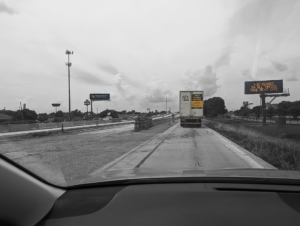Navigating the world of auto insurance for the first time can be challenging. Car insurance providers offer different types of car insurance with various levels of coverage. If you only seek to abide by car insurance laws, then you only need the most basic type of insurance required in your state. However, if you wish to protect yourself with additional coverage, you may want to sign up for a more comprehensive insurance plan. Below, we’ll cover some of the most common types of car insurance.
What Are the Different Types of Car Insurance?
The most common types of car insurance are:
- Liability insurance
- Personal injury protection
- Medical payments coverage
- Uninsured motorist coverage
- Underinsured motorist coverage
- Collision coverage
- Comprehensive coverage
- Gap insurance
Each state has different auto insurance requirements, but most states require some level of liability insurance that covers bodily injury and property damage. Some states may also require personal injury protection, collision damage, or comprehensive coverage. All additional coverage is voluntary and can help cover various expenses in the event of a car accident.
What Does Liability Insurance Cover?
Liability insurance covers the expenses of the other driver and their passengers if you are found to be at fault for an accident. There are two types of liability insurance:
- Bodily injury liability. This covers all medical expenses associated with any injuries suffered by the other party. This may include hospital costs, doctor’s appointments, medicine, and treatment.
- Property damage liability. This covers any damages made to other vehicles, buildings, and objects that were involved in the accident.
Almost all states require a combination of both bodily injury and property damage liability for all drivers. However, they usually cap the required level of insurance. For example, Texas requires drivers to have:
- $30,000 of bodily injury insurance per person
- $60,000 of bodily injury insurance per accident
- $25,000 of property damage insurance per accident
Louisiana has similar requirements with lower limits, only requiring drivers to have:
- $15,000 of bodily injury insurance per person
- $30,000 of bodily injury insurance per accident
- $25,000 of property damage insurance per accident
However, you may choose to increase your limits to have more protection in the event of an accident. A catastrophic injury could easily result in expenses that exceed the state minimums.
What Does Personal Injury Protection Cover?
Personal injury protection (PIP) covers damages associated with injuries suffered by the at-fault driver and any passengers in the vehicle. Also known as no-fault insurance, this coverage type allows you to have your injury damages covered even if you were at fault or partially at fault for the accident. These damages include:
- Medical expenses
- Lost wages
- Funeral costs
- Reasonable expenses related to rehabilitation
Knowing that your insurance will cover your medical expenses could help you see a doctor right away, as you shouldn’t wait to see a doctor after an accident.
What Is Medical Payments Coverage?
Also known as MedPay, medical payments coverage allows you to have your medical expenses covered even if you were at fault for the accident. However, unlike PIP, MedPay will strictly cover medical expenses, whereas PIP can cover documented expenses related to the injury like lost wages.
What Is Uninsured Motorist Coverage?
Uninsured motorist coverage protects you in case you are hit by an uninsured driver. If the at-fault party doesn’t have insurance, then your insurance will cover your expenses if your policy included uninsured motorist coverage. There are two types of uninsured motorist coverage:
- Uninsured motorist bodily injury coverage (UMBI) – Covers medical expenses caused by the at-fault driver
- Uninsured motorist property damage coverage (UMPD) – Covers property damages caused by the at-fault driver
Some states may require some level of uninsured motorist coverage. However, neither Texas nor Louisiana requires this type of car insurance for all drivers.
What Is Underinsured Motorist Coverage?
Underinsured motorist coverage protects you in case the at-fault driver’s insurance policy levels are too low to cover all the damages associated with the accident. For example, if the at-fault driver’s liability coverage only covers $30,000 of damages per person, but your damages come out to $40,000, then your insurance would cover the remaining $10,000 if you have this type of coverage.
There are two types of underinsured motorist coverage:
- Underinsured motorist bodily injury coverage (UIMBI) – protects you if the at-fault driver’s policy limits are too low to cover all injury expenses
- Underinsured motorist property damage coverage (UIMPD) – protects you if the at-fault driver’s property damage insurance limits are too low to cover all the property damage costs associated with the accident
What Is Collision Coverage?
Collision coverage covers your vehicle when it’s damaged regardless of who was at fault for the damage. This includes damages caused by hitting potholes or inanimate objects like poles, trees, lamps, walls, and more. This type of insurance is almost always optional, although some states may require certain drivers to have it, such as those driving leased or financed vehicles.
What Does Comprehensive Coverage Cover?
Comprehensive insurance covers any damages caused by anything other than a car accident. This can include:
- Weather conditions like floods, storms, earthquakes, and hail
- Vandalism
- Falling objects
- Hitting an animal on the road
Like collision coverage, comprehensive coverage is almost always optional. However, some states may require comprehensive coverage for drivers of leased or financed cars.
What Does Gap Insurance Cover?
Also known as loan/lease gap coverage, gap insurance covers you if your car is totaled or stolen and the outstanding loan amount is higher than the current value of your car. For example, if you have an outstanding auto loan balance of $20,000, but the insurance company only values your car at $16,000, then gap insurance would cover the remaining $4,000 if your car is totaled or stolen.
Can a Car Accident Lawyer Help With My Auto Insurance?
A car accident attorney can help you if you’re involved in an accident and need help dealing with the insurance company. Whether your own company is refusing to hold up its end of the bargain or the at-fault driver is uninsured or underinsured, having the legal representation of an experienced attorney by your side can help you ensure that you get the damages that you need and deserve.
If you’ve been involved in an accident, contact Morris & Dewett today to schedule a free consultation. One of our experienced auto accident attorneys will be happy to discuss your car accident case with you.
Sources









